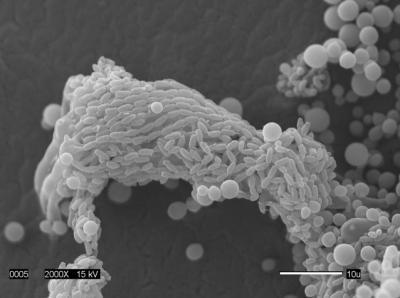DURHAM, N.C. – Within each strand of DNA lies the blueprint for building an organism, along with the keys to its evolution and survival. These genetic instructions can give valuable insight into why pathogens like Cryptococcus neoformans -- a fungus responsible for a million cases of pneumonia and meningitis every year -- are so malleable and dangerous.
Now researchers have sequenced the entire genome and all the RNA products of the most important pathogenic lineage of Cryptococcus neoformans, a strain called H99. The results, which appear April 17 in PLOS Genetics, also describe a number of genetic changes that can occur after laboratory handling of H99 that make it more susceptible to stress, hamper its ability to sexually reproduce and render it less virulent.
The study provides a playbook that can be used to understand how the pathogen causes disease and develop methods to keep it from evolving into even deadlier strains.
"We are beginning to get a grasp on what makes this organism tick. By having a carefully annotated genome of H99, we can investigate how this and similar organisms can change and mutate and begin to understand why they aren't easily killed by antifungal medications," said study coauthor John Perfect, M.D., a professor of medicine at Duke who first isolated H99 from a patient with cryptococcal meningitis 36 years ago.
The fungus Cryptococcus neoformans is a major human pathogen that primarily infects individuals with compromised immune systems, such as patients undergoing transplant or those afflicted with HIV/AIDS. Researchers have spent many years conducting genetic, molecular and virulence studies on Cryptococcus neoformans, focusing almost exclusively on the H99 strain originally isolated at Duke. Interestingly, investigators have noticed that over time, the strain became less and less virulent as they grew it in the laboratory.
"Virulence, or the ability of this organism to cause disease in mice or humans, is not very stable. It changes, and can rapidly be lost or gained. When the organism is in the host it is in one state, but when we take it out of the host and begin growing it in the laboratory it begins mutating," said Fred Dietrich, senior study author and associate professor of molecular genetics and microbiology at Duke University School of Medicine.

Scanning electron micrograph shows infectious spores produced by the deadly fungi Cryptococcus neoformans.
(Photo Credit: Duke University)
Dietrich and his colleagues decided that the best way to investigate how the virulence of this pathogen could change over time was to develop a carefully annotated genomic map of the H99 strain, both in its original state as well as after it had been cultured. In an effort that took ten years and dozens of collaborators, the researchers sequenced the original H99 and nine other cultured variants, analyzing both the genome, the genetic code written in the DNA, as well as the transcriptome, the RNA molecules that occupy the second step in the flow of genetic information from DNA to RNA to protein.
The researchers found that the organism possessed a number of molecular tricks -- such as the ability to produce genetic messages from both strands of DNA -- that enable it to adapt and survive in changing conditions.
"Cryptococcus neoformans has to cope with a large number of different stresses and probably needs a very flexible metabolism. It is tempting to hypothesize that its complex RNA metabolism provides a mechanism to achieve such flexibility," said Guilhem Janbon, Ph.D., lead study author and faculty in molecular mycology at the Pasteur Institute.
They also discovered that the original and cultured strains were surprisingly similar to each other. After scanning the 20 million A's, C's, T's and G's that make up the pathogen's genetic code, they found only 11 single nucleotide variants and 11 insertions or deletions that could explain why cultured strains behaved differently.
"Our results provide the groundwork needed to understand how this organism causes disease, because the next step will involve mutating every gene one by one to see which ones are required for pathogenesis," said Joseph Heitman, M.D., Ph.D., senior study author and professor and chair of molecular genetics and microbiology at Duke.
The results will not only help researchers study this particular organism, but can also serve as a starting point for studies on other strains of Cryptococcus neoformans.
"This genome will serve as an important reference for the field, to enable a wide range of analysis from examining individual genes to comparing the genomes and transcriptomes of other strains and conditions," said Christina Cuomo, Ph.D., study co-author and leader of the Fungal Genome Sequencing and Analysis Group at the Broad Institute. "We are already leveraging this genome to identify variants in the sequence of hundreds of additional isolates of Cryptococcus neoformans."




Comments